So, you want to buy a boat. For those of you navigating this decision with someone else, you might think you’ve done the hardest part—getting that person to agree. But now, the real fun begins.
Like any big purchase, buying a boat means jumping through hoops. It’s not as simple as finding a boat that looks good, signing on the dotted line, and handing over the money. But it doesn’t have to be overly complicated, either.
In this article, I’ll share with you our experience of buying our 2016 Leopard 44 Sailing Catamaran (now christened S/V Adventure Crews). I’ll talk about how the process might typically go, some tips for making the whole thing easier, and stuff we learned along the way.
Buying a boat is a huge decision, but it doesn’t have to be overwhelming. And when it does get frustrating, keep your eyes on the prize: the wind in your face, the sun on the water, and the new places you’ll get to explore.
Read: Meet S/V Adventure Crews
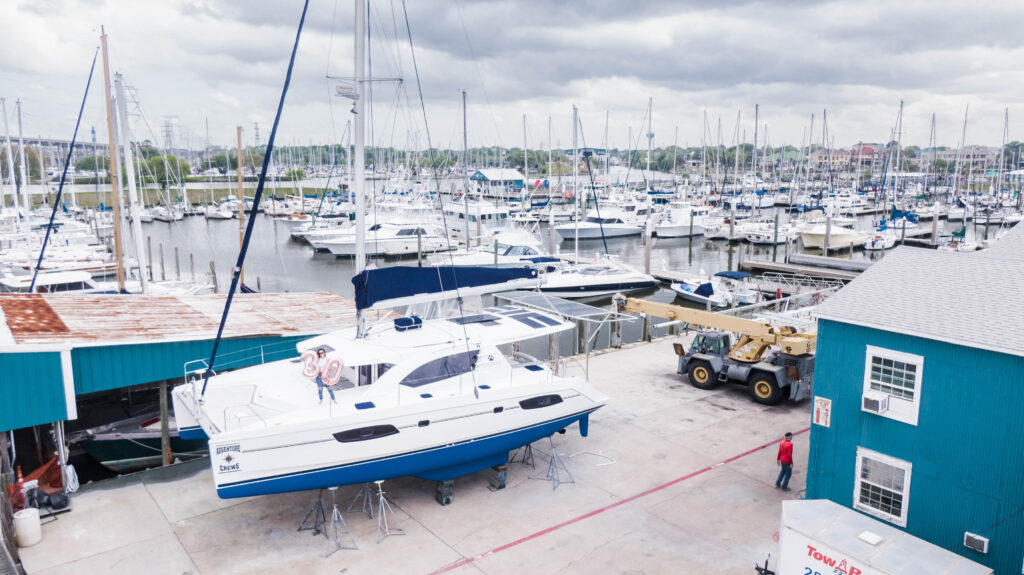
Two ways for buying a sailboat: brokered sale vs. private sale
In general, there are two ways to buy a boat: get help from a yacht broker, or manage the sale privately. Whichever path you choose will depend on how much time and energy you want to put into the nitty-gritty details, vs. how much money you want to save.
Using a broker has its pros and cons. Some pros: not only will brokers help negotiate the sale price, but they’ll complete what’s called “due diligence” for every aspect of the sale, from helping organize the surveys, the sea trial (ensuring the boat works properly on the water), boat storage, delivery, and making sure you’re getting what you’re paying for. They’re your agent, protecting your interests every step of the way.
The con, however, is the price. Brokers charge a fee (usually 10%), and although the seller pays it, the seller may compensate for it by upping the price of the boat.
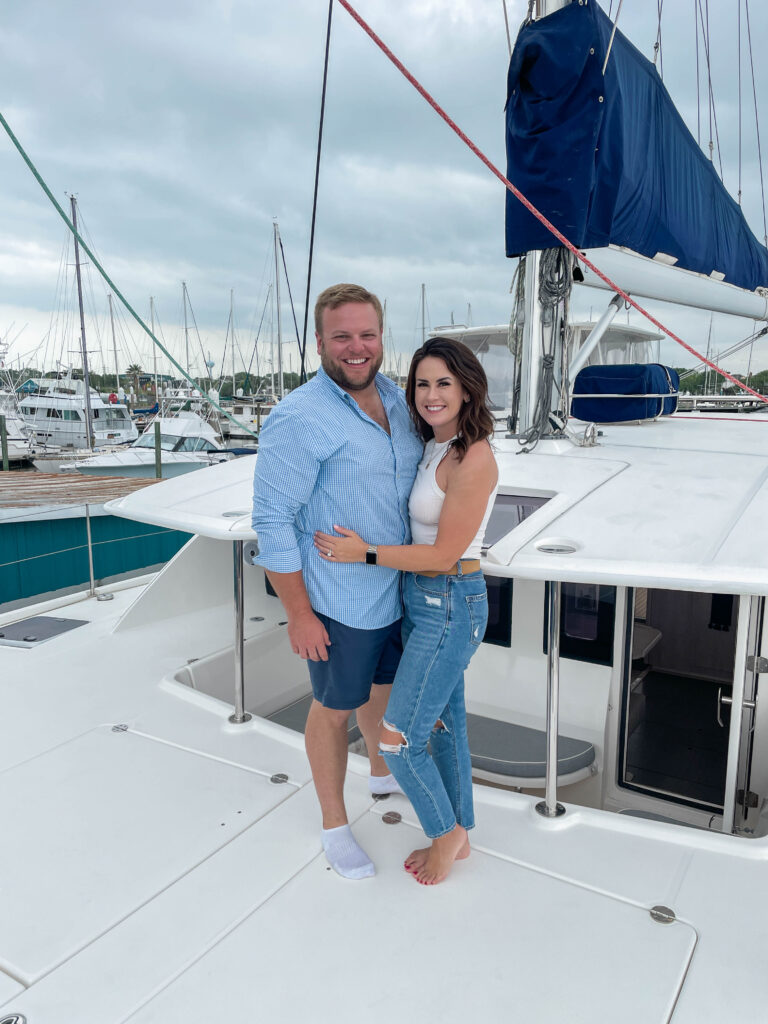

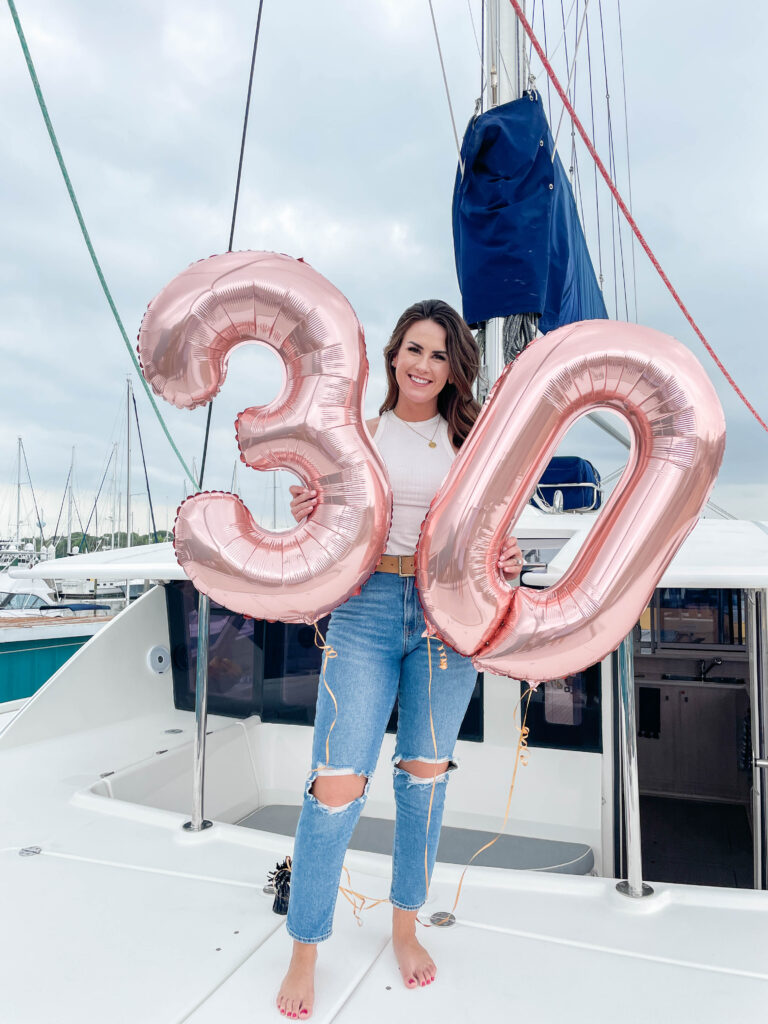



Buying a sailboat via private sale
If you’d rather save money than time, a private sale may be the best choice. You can negotiate a better price (since the seller is not paying brokerage fees), but completing your own due diligence will take more time. You’ll have to work directly with the seller to organize storage, delivery, surveys, and paperwork. It can be daunting, but experience is a great teacher, right? Once you’ve done it, you’ll know the ropes.
At least, that’s my conclusion. We decided to go the private route. Most brokers I contacted weren’t very attentive or helpful because they could tell I was researching and completing the due diligence myself—and because I couldn’t hand over any money then and there.
That put me off using a broker, but now that I’ve undertaken the buying process privately, I’m much more sympathetic and respectful of a yacht broker’s job. They certainly earn their fee.
If you do end up using a broker, I’d highly recommend Michelle Ropiza at Catamaran Brokerage. Although I went the private route, I communicated with her when I was looking into brokers, and she was very responsive and helpful in answering my questions. She clearly values relationships with all potential customers, not just the ones who can buy a boat that same day.
Now, let’s talk about the boat-buying timeline, and what to expect.
Buying a sailboat timeline
This timeline is not set in stone, but here’s a general overview of the steps you’ll take.
Find the right boat
Once you’ve decided on your buying route (brokered or private), you can start the search for your dream boat. Just like real estate, boat sellers and brokerages use a Multiple Listing Service, or an MLS—an entire database where you can search what’s for sale.
The problem with boat MLSs? The listings are either sold before you get a chance to go see them, or they’re incredibly overpriced because of high demand.
Not wanting to waste time or pay way over budget, I took a different approach: Facebook. I trawled through many buying/selling Facebook groups, paying attention to prices and the rise and fall of the market. When the time was right, I posted about our interest in buying a certain type of catamaran, and a seller contacted me. We ended up buying his boat.
I’d highly recommend this strategy for those interested in a private sale. If you’re going with a broker, he or she will keep you updated on the boats coming onto the market—particularly the boats being sold by the sellers that broker is working with.
Contact the seller or broker
Once you’ve found the boat you want, you’ll make contact with the seller (or broker, if appropriate). Together you’ll schedule a showing, and if you like what you see, you’ll start negotiations.
You should know that the buyer always writes the contract for the seller. I included four contingencies in our contract: surveys, the sea trial, financing, and approval from insurance.
Once you agree on a price and the contingencies, you’ll sign the contract (or “signed purchase agreement”) and then move forward with your surveys.
Arrange the surveys
You or your broker will have to find a surveyor to do a complete inspection of the boat (both in and out of the water). Having a proper survey done is the most important process of all, because insurance and financing are dependent on the survey’s results. Once the survey’s done, you can send it to the lender and the insurance company.
Arrange the sea trial
This is marine-speak for ‘test drive’, and it’s not meant to be a free boat ride. It’s a chance for you to make sure the boat’s engine and other aspects work well, which can only be determined out on the water. Typically, the seller would agree to take you out on the boat, or at least make it available to be taken out, and let you inspect things for yourself. You’ll probably want a marine surveyor or mechanic to accompany you, and you as the buyer will be responsible for the costs.
Some things to check during a sea trial: steering, engine performance, any weird sounds, speed, engine oil/coolant levels before and after the trip, in case of leaks.
Secure financing
Securing the loan for the boat was the most eye-opening for us. I expected the process to be like any other real estate transaction I’ve been involved in: sign a bunch of papers in Texas where I was buying the boat, get them notarized, etc.
I was wrong.
The lender emailed me everything, with an overnight shipping label. I had to print it, have it notarized, and overnight it back to their office.
Get insured
Marine insurance policies can be all over the place, but they all have one thing in common: they’re expensive! This topic needs an entire article to itself, but I’ll summarize it here.
Like any type of insurance, you’ll need to work with an agent, or insurance broker. Most of the ones I talked to claimed they could get me “the best rates”, but it depends on what you’re including in your policy. Think through where and when you’re planning to go. For S/V Adventure Crews, we wanted to ensure she was fully covered, including lightning protection, and we wanted to be able to sail in the Bahamas during hurricane season.
You’ll need to include what’s called a ‘boating resume’ in your insurance application. It doesn’t have to be incredibly extensive, but you should include any boats you’ve operated, where you went, how many hours, etc.
In terms of finding the right insurance broker: everyone you talk to will “know a guy,” but if you want someone who will answer the phone, listen to your needs, and make sure you get what you want, I’d definitely recommend my broker, Garrett Johnson with Southern Insurance Group. (352) 243-9000, Garrett@Insurewithsouthern.com.
Fill out marine documentation
At the same time as finding the surveyor, you also have to find a marine documentation company that will prepare the right paperwork for the US Coast Guard. They also complete the abstract and title search for the sale, making sure there are no liens on the boat or issues from a financial/servicing standpoint. Once they’ve compiled that documentation, they send that to the lender. Only once the lender has processed all of that, then they will release the funds.
Funds in escrow
You have to have your funds in escrow for the down payment. Once you provide proof of those funds in escrow, then the money will be released to you as the buyer (or your broker), who can transfer it to the seller.
Finally, the boat is officially yours!
This was a very different process from buying a house. There’s no official ‘handing over the keys’ appointment. We literally just got on the boat with our correct paperwork and sailed across the Gulf back to Florida.
—
Buying a boat is a big decision, and I hope this post makes your experience a little easier. Although your process may still include frustration and headache-inducing paperwork, the end result will be entirely worth it.
Share on Pinterest!
If you enjoyed this post, please share it on Pinterest. We’ve added these images for easy pinning!
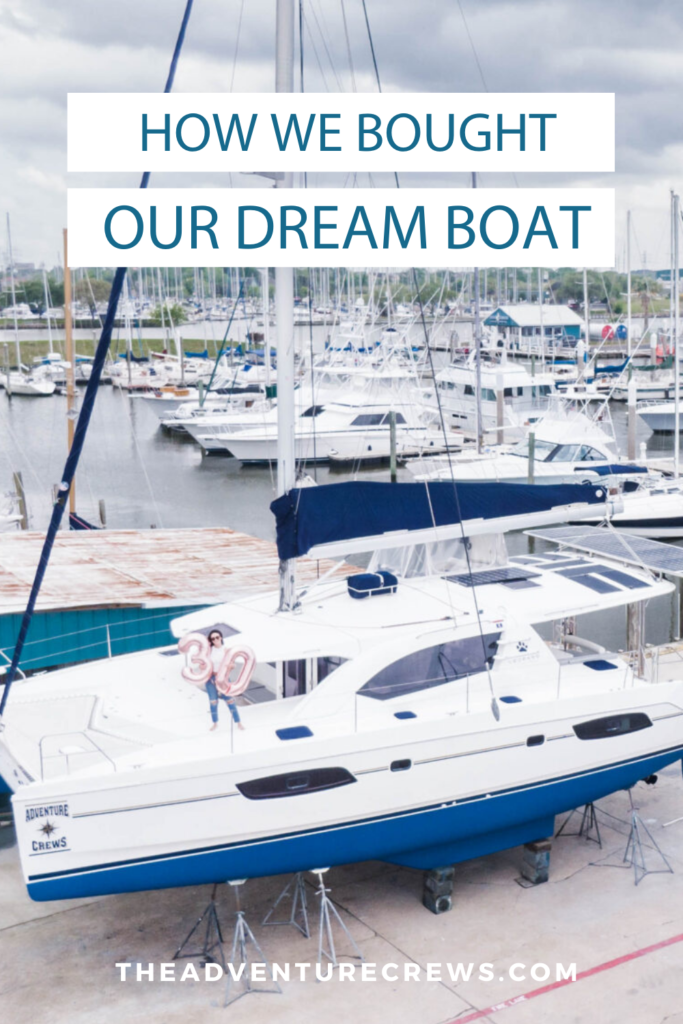

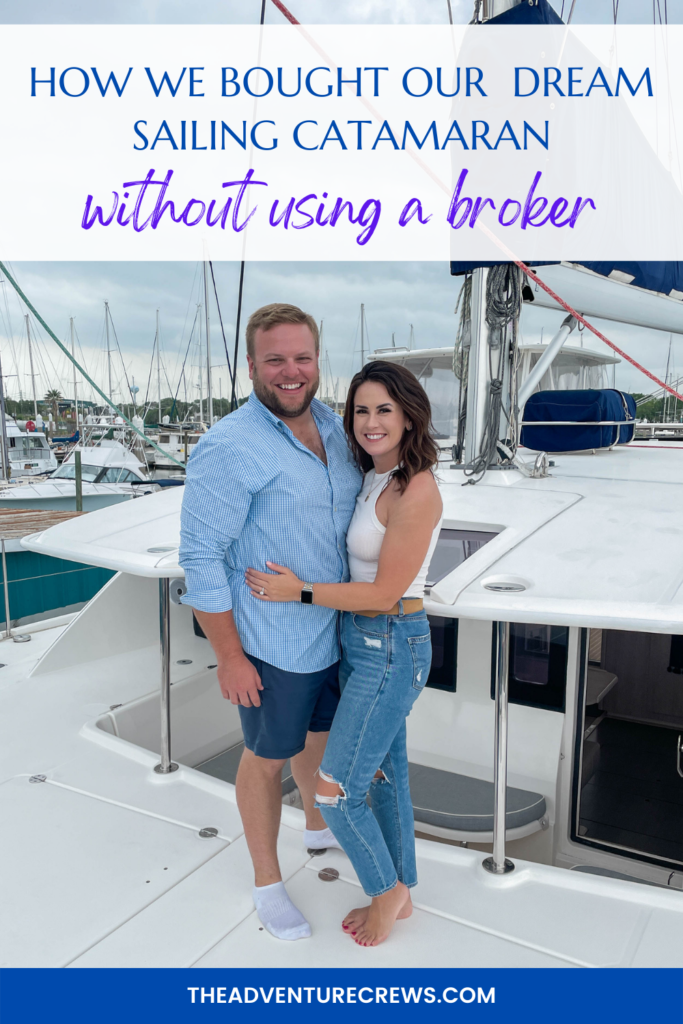

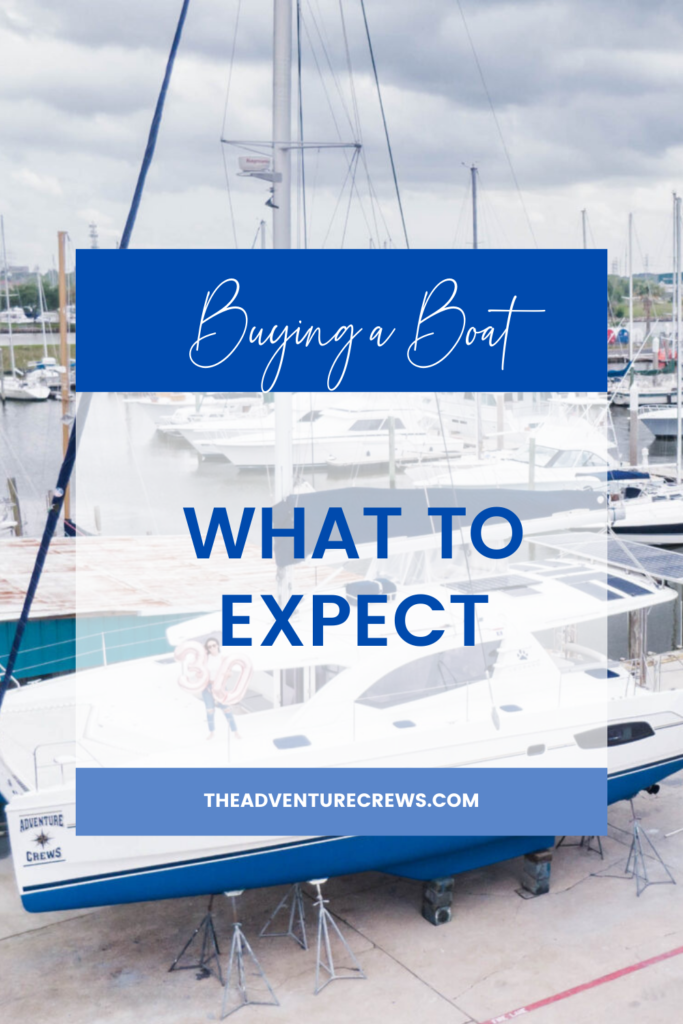

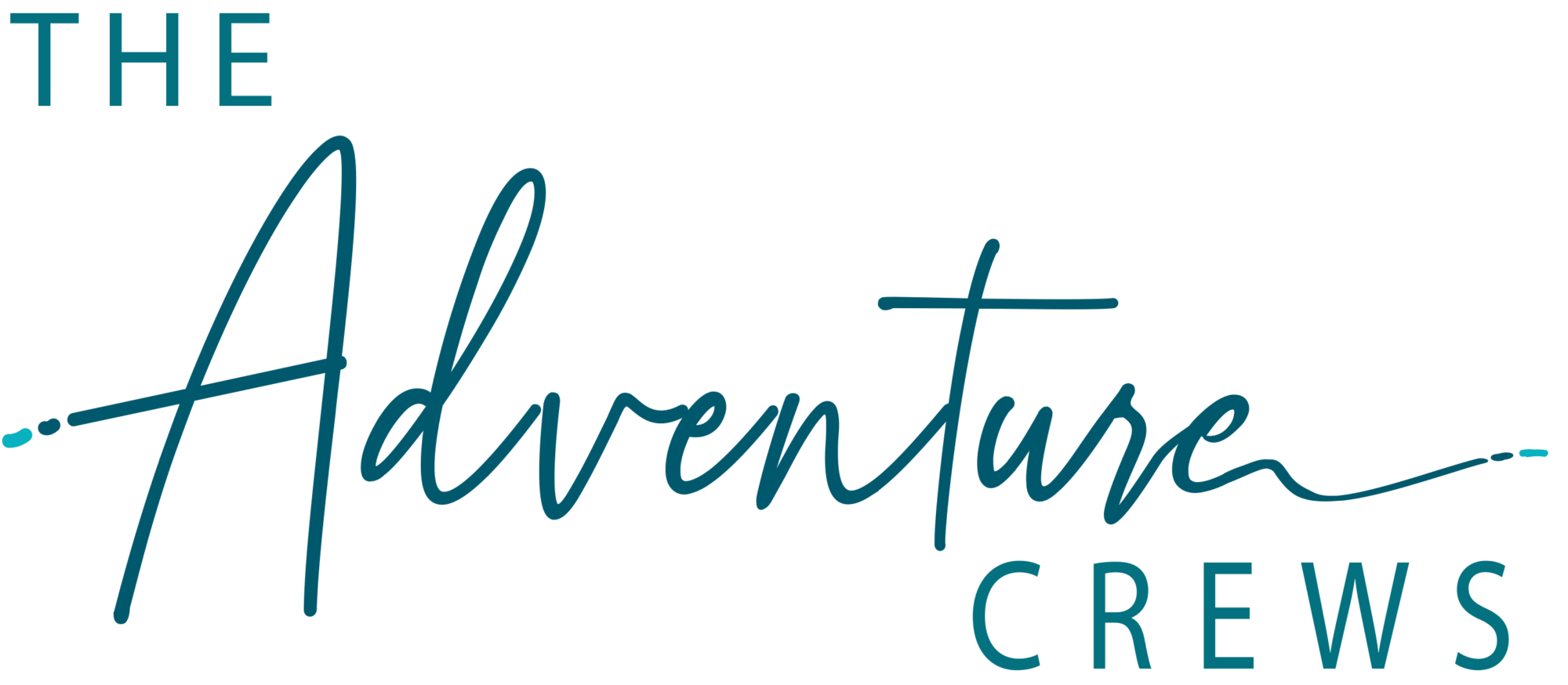






4 Responses
Great overview! For anyone reading this – Michelle Ropiza is truly the best catamaran broker! Unbelievably knowledgeable and truly cares about what’s best for YOU!